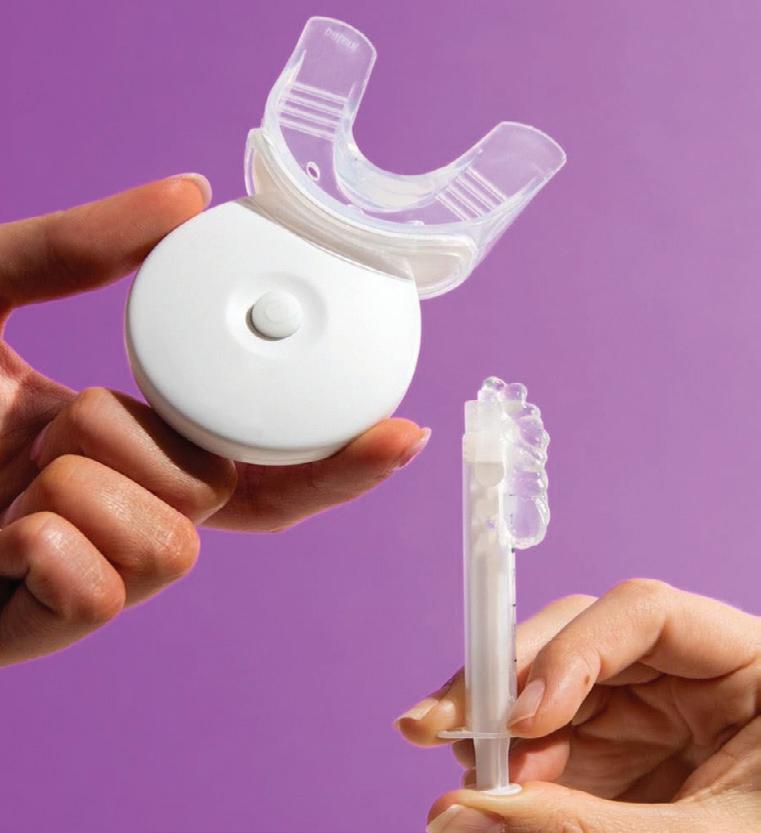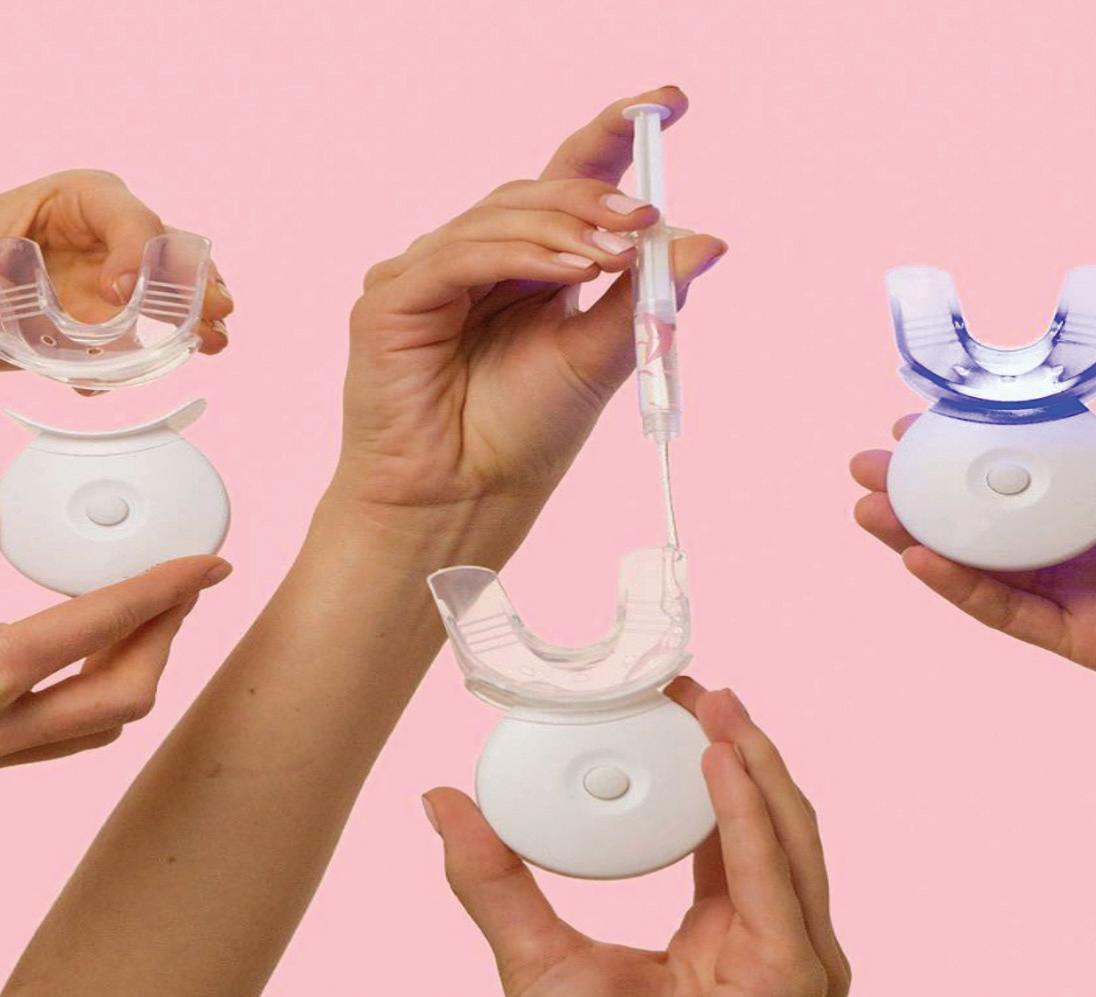
20 minute read
Lifestyle
12
life & style lifestyle D ry January-the new hip thing to do for when you’re needing a ‘new year, new you’ kind of vibe. But are the benefits worth the full month of self-restraint? After failing to give it a go this year, my research has told me that it is definitely on my todo list for next January. Here are the top three reasons to try it out yourself.
Advertisement
Firstly, the process of not drinking from 1 January (that IS right, you will have to stop drinking whilst on your new year’s night out), to 1 February will improve your health. ‘BMI Healthcare’ states that dry January gives you an increased amount of sleep, more energy and aids weight loss.
We have all had those nights where we have had a few too many drinks, and we lie awake in bed staring at the ceiling, frustrated at our inability to sleep. With alcohol damaging your quality of sleep, stripping out alcohol from your diet can help you get those well needed hours of sleep. More rest inevitably brings more energy, and that is why Alcohol Concern have said that 71% of people who undertook it had better sleep and 67% had more energy. Considering weight loss, the reduction of liquid calories is going to make you shed a few pounds. A bottle of wine, a few pints, mixers - they are all high calorie drinks. If losing weight after Christmas is something that you want to embark upon (not that you should necessarily do this because you all look perfect as you are), then dry January can help you after Christmas.
Secondly, there may be a change in attitude without alcohol. With alcohol being a depressant, when those January blues hit it can be easy to reach for a beverage to lift your mood. But if alcohol gives you a high and then leaves you feeling worse off, surely cutting out that depressant in a month where many feel at a low-point anyway can only be a good move? Restraining from alcohol is not just about physical health, but your emotional and mental health Alcohol is not a secret potion to enjoying a social occasion Should we ditch the drink? Sophie Wilson discusses whether Dry January is a cocktail for disaster or a shot of success as she debates the pros and cons


Television presenter Philip Schofield recently announced he is gay, despite being married to a woman for 27 years. Naturally, this has led to a lot of speculation… about whether he knew he was gay when he married a woman, about why he didn’t ‘come out’ sooner, and about how his family might be feeling at this time.
As far as I’m concerned, there is a single answer to all of these questions: none of our business. We can speculate, of course. Maybe he genuinely believed he could suppress his feelings for men at the time of his marriage.
Maybe he didn’t feel comfortable coming out earlier in his career because LGBTQ+ people were less accepted back then, and he worried about how the public might react. Maybe his family can happily accept that he is still the same person he was before he came out.
Ultimately, however, Schofield has every right to keep the answers to these questions between himself, his wife, and his daughters.
With regards to his wife, she is the only person who really knows how she is feeling. She might be devastated, and she might feel deceived, as online commentators keep claiming.
Yet, she could just as easily feel happy that he is finally able to be true to himself. After all, this is someone with whom she has a long, shared history.
Regardless of her feelings towards her husband in this moment, at some point, she loved him. Only she knows the extent to which this is still true.
Rather than people speculating about her feelings online, she needs time, and privacy, to allow her to process the massive changes her life is currently undergoing. Let’s stop telling her how she ought to feel.
As for Schofield himself, the majority of reactions to his news have been positive - as they should be, in this day and age. The majority of negativity comes from the belief that he has misled his wife and daughters which, whilst unpleasant and hurtful, at least doesn’t mock him simply for the fact he is gay. His personal appeal has not been diminished by the news about his sexuality, for the majority of people.
That being said, the darkest depths of Twitter have still seen fit to make some rather unpleasant allegations. Several conspiracy theories have emerged, claiming Schofield has ‘pursued’ younger men, despite very little evidence. I firmly believe such allegations are rooted in homophobia. A certain breed of person doesn’t seem to want to believe that Schofield kept his sexuality private simply because he wasn’t ready to speak his truth. They are convinced there must be a darker, more unpleasant reason for his silence. Such theories stem from the appalling belief that being gay is a ‘dirty secret’, and the evil stereotype that gay men have a tendency to ‘pray’ on younger men. In the wake of Caroline Flack’s suicide, I think we need to remember that the consequences of constant, cruel speculation about one’s private life can be devastating, and call out such be- haviour.
Personally, I think we should just be glad that Schofield finally felt comfortable enough to come out whilst in the public eye, regardless of how long it has taken him to reach this point. The darkest depths of Twitter have seen fit to make some rather unpleasant allegations The majority of reactions to his news have been positive - as they should be, in this day and age
Image: @PhillipSchofield on Instagram (which is always of the upmost importance). Finally, the long-lasting effect of it may be that you realise alcohol is not a secret potion to enjoying social occasions. When going out with friends and not drinking is proven to be just as good as getting really drunk and spending time with them, your perspective might just shift regarding your dependence upon it. Even if the effect is a few less drinks at pres, or a few less drinks at a bar each night you go out, then your body will be thankful.
So all in all, dry January is such an appealing concept, and I definitely need it to help me in my January slump next year. Why don’t you join me for next January? Image: Authority Dental under Creative Commons 2.0 Television’s Phillip Schofield comes out as gay Image: Photo by Mae Mu on Unsplash Em Richardson discusses the This Morning host’s courageous announcement and how it’s actually none of our business
the courier 13 life & style lifestyle Monday 24 February 2020
The dangers of DIY teeth whitening




Hippocrates once said, “all disease begins in the gut” and it would appear that his words couldn’t be more pertinent today. Microbes start populating our guts the day we’re born but many people’s microbiome in 2020 are lacking diver- sity thanks to our overuse of antibiotics and poor diet. The trillions of bacteria and other microbes that occupy every single human gut have a vital role to play when it comes to metabolism, immune system and mood. It therefore comes as no surprise that doctors and gut health experts are trying to educate people on how to improve the number and variety of microbes in your gut. Here are some simple ways to give your gut the boost it needs: Eat fermented foods Fermented food such as kimchi and tempeh are a great way to improve your gut health and as exotic as they may sound, they are fairly easy to get hold of. You should also give Kombucha a try, a fermented tea that originated in East Asia. It is now homebrewed worldwide and also widely available on supermarket shelves. The drink is produced by fermenting sugared tea using a symbiotic culture of bacteria and yeast (SCOBY) and is full of good bacteria that will improve your microbiome. Eat a huge variety of fruit and vegetables The more colourful the better when it comes to fruit and veg, as different types of bacteria like different types of food and it is important to feed them all the right things. This is also beneficial for increasing fibre levels, something that is also needed to feed healthy bacteria. Eat cheese and live yogurt You should incorporate yogurts such as ke- fir and Greek yogurt into your diet, as they contain high levels of probiotics, which are great for improving gut microbiome. Avoid excessive amounts of sugar Eating excess sugar tends to feed the bacteria that we want less of in our gut and can therefore lead to gut dysbiosis, which is an imbalance of gut microbes. Intermittent fasting Fasting is often seen as a great way to loose unwanted weight but it is also another way of improving gut health. Intermittent fasting allows your digestive system to rest properly and helps to replenish gut bacteria.
Catherine Entwistle I t is no secret that in 2020 the world has no limits in terms of extreme methods people use to alter their appearance. However, with recent reports that many teeth whitening products are damaging to our health, how far are people willing to go to look good? From the ‘Real Life Ken Doll’, who has had sur- gery to remove multiple ribs in order to achieve a smaller waist, to influencers such as Molly Mae admitting they took it too far with facial fillers, the beauty industry now offers a wealth of cosmetic surgery and treatments.
According to the General Den- tal Council figures, illegal teeth whitening increased by 26% last year. This is through the use of unqualified practitioners con- ducting teeth whitening and many at home teeth whiten- ing kits containing dangerous chemicals.
The British Dental Association (BDA) recommends that the safest way to obtain whiter teeth is to see a qualified professional. But with many influencers promoting at home teeth whitening kits, the draw of pearly whites at an af- fordable price is too good to resist for many, despite the dangers attached.
Instagram has a lot to an- swer for when considering why these teeth whitening products have gained popularity. With users such as Khloe Kardashian promoting teeth whitening products by hi-smile to her 104 million followers, it is clear why followers who aspire to look like her may want to buy beauty products she promotes. There is an argument that now celebrities and influenc- ers have to disclose when their content is an advert, we are less likely to buy into the product they are promoting as the sceptics among us will assume Khloe didn’t actually use hi-smile.
However, through the masses of influencers now gain- ing popularity on Instagram, from Love Island stars to upand-coming models and fashion bloggers, our society has normalised cosmetic procedures.
There are countless videos on YouTube where women share their boob job experience, and many influencers are paid to post their experience with chemical facials and teeth whitening on their Instagram stories - we cannot es- cape the fact we are obsessed with learning about how we can better ourselves physically.
Through being exposed to media that promotes cosmetic procedures, we are normalising this practice which often leads to people putting their bodies at risk in order to achieve results at a more affordable price.
There is nothing wrong with undergoing a cosmetic procedure - if it will genuinely make you happier and you are doing it only for yourself, I don’t see any issue with it. Nonetheless, it is important to note that a cosmetic procedure should be seen as an investment as rushing to get the most affordable treatment may put your body in danger. It would take a lot to alter our culture of longing to look our best
Instagram has a lot to answer for when considering why these products have gained popularity Image: Authority Dental under Creative Commons 2.0
Importance of a happy tummy Image: @usmilewhitening on Instagram Image: @usmilewhitening on Instagram I f we’re lucky, most of us don’t have to think much about our health, bar a yearly cold. But today I want to talk about a disease which goes under the radar and is not talked about enough, despite having a huge impact on hundreds of thousands of lives across the country.
Inflammatory Bowel Disease (IBD) is an incurable, chronic condition coming in two main forms: Crohn’s disease and Ulcerative Colitis. In the UK, 300,000 people are diagnosed with these conditions, and about a quarter of which are children and young adults.
So, what is it like to live with this condition, especially as a young person, and how can we remove the stigma the surrounds this severe and debilitating condition?
I first learned of IBD four years ago when my dad was diagnosed with Ulcerative Colitis. I had never heard of this illness before and had no idea what it would mean for my dad and his day-to-day life.
The symptoms of IBD are varied, but loss of appetite, weight loss, diarrhoea, and extreme fatigue are common. One of the hardest parts of living with IBD is its unpre- dictability - it is a lifelong condition during which time people may experience periods without symptoms (re- mission), but likewise, flare-ups and more severe symp- toms can occur, making it difficult to manage.
One of my friends here at Newcastle spoke to me about his experience of IBD and what it is like to be a young person with a chronic illness. He was diagnosed with Crohn’s disease at 16, after he experienced a loss of appetite and an inability to retain food. This resulted in extreme weight loss, reaching a worryingly low of 40kg. IBD is often seen as a ‘hidden disability’ - that is one which other people would be completely unaware at first sight. Unlike some disabilities IBD does not speak for itself, and so people have to make the decision to open up about their illness and start that conversation.
This can be a difficult task at the best of times but especially as the British culture is one of the ‘stiff upper lip’, which can have a negative effect on our discussion (or lack thereof) about health. IBD often comes with feelings of embarrassment or self-consciousness, and avoiding conversations about health only furthers these worries. Therefore, as a student, it can seem quite a daunting task to discuss health issues. IBD sufferers have to face chal- lenges on a daily basis, such as judgement for using a dis- abled toilet as their disability is not immediately obvious. I hope that in opening up discussion around IBD and health we can increase awareness for and understanding of this serious condition.
If we continue to treat chronic illnesses as a ‘taboo’ topic, we will only isolate further those affected. The more we talk, the easier it gets.
Cora Herbert Coping with chronic illnesses Image: Photo by Brooke Lark on Unsplash Phoebe Eyles explores the lengths people go to look good and the risks that comes with that
14
life & style the courier Monday 24 February 2020 c2.fashion@ncl.ac.uk Fashion Editors Kajal Patel, Phoebe Eyles & Shamara Mohsin fashion I n fast-paced, internet obsessed world, online shopping has undoubtedly changed the game. But trying to get clothes in the right size has always been a massive issue, particularly for people whose bodies are considered to be outside. Buying clothes that fit well and look good has always been easier for people whose bodies fit into a rigid mould. Hopefully, ASOS’s new feature could change all of that.
ASOS are, in their own words, “always testing new technology that can make our customers’ experience even better.” In the past, however, the company’s solution to sizing problems have been pretty problematic. Their clothes aren’t usually sold in regular UK sizes (6, 8, 10, 12, etc.) instead opting for waist and length measurements which, unless you have a tape measure, is useless. In 2017, they released a solution to this called the Fit Assistant Size. This asks you to submit your weight, height, body type and age in order to predict your size. Whilst this idea is good in theory, I’ve found it to be super inaccurate; I have a pair of unreturned trousers that are a foot too long for me as proof of this. It also asks a million questions that can be uncomfortable to answer about yourself (I’ve gotta say, putting my weight into this thing hasn't always been the most fun experience). ASOS’s latest scheme, however, sees them working on AR to “show products on different size models, so customers can get a better sense of how something might fit their body shape.” If this works, it could be great. The issue with clothing sizes online aren’t just whether they’ll fit, but whether they’ll look good, and being able to see models with similar body types to us will massively help with this.
How this AR t e c h n o l o g y will work is the important question, as if it’s anything like the Fit Assistant Size I’m not sure I’ll trust it to be reliable. It seems to me that the best way of doing this would be to get different models to wear the clothes, but this is probably unrealistic as most people know that the clothes get edited onto the models in post to make them look good. Whilst this scheme has the potential to be an inclusive step forward, the photos will probably still make the clothes look better than they actually are, leaving customers disappointed when they arrive.
Becoming more inclusive is important, but the reality is that fast fashion is deceptive. The clothes that these models wear (or don’t wear, if they’re edited on) are not the clothes we’re receiving, and no matter how many body types are featured, they probably aren’t going to look as good. If brands like ASOS really want to limit the number of returns being made, they need to focus on producing quality clothing with a variety of clear, understandable sizes. Maybe then we would have more of a clue of what’s actually going to come through the post box. Becoming more inclusive is important, but the reality is that fast New ASOS feature: a sizeable problem? I'm not sure I'll trust it to be reliable
Images: @ASOS on Instagram Deputy Editor Molly Greeves reviews ASOS' new tech feature that shows items of clothing on different body shapes



Victoria Beckham has transformed from the iconic pop singer to a successful business and family woman. Throughout the decades she hasn’t fallen shy of following the fashion trends and even introducing her own either way she was always slaying. Here’s a look back at five times the talented Beckham slayed the game. Charley Moran discusses the best of Posh Spice's looks Victoria's style game Even being pregnant with baby Harper she still slayed
Rashida Campbell-Allen discusses controversies concerning clothing in the workplace and how this can impact women 'Shouldergate' in the workplace
Image: Christina @ wocintechchat.com on Unsplash

First, is her stunning look from the Royal wedding in 2011. Her Philip Treacy hat, which wasn’t ready until last minute, looked amazing as it resembled a blue Werther’s original toffee shape scored through with a long naturistic decoration. Matching this she wore a midnight blue tunic dress from her own collection, which personally designed, that was able to hide her bump. Even being pregnant with baby Harper she still slayed, managing to wear the Christian Louboutin heels completing this elegant look and making it a classic, perfect for the royals. Next are two red carpet looks from The British Fash- ion Awards 2018 and 2011 where she wore two stun- ning outfits. 2018 saw her slay in a top to toe black dress, taking a classic halter neck gown and reimagining it on top of a pair of the signature tailored trouser that brought back the 00’s ‘ Dress over Trousers’ look, that came from her own collection. 2011 saw her win designer brand of the year and she absolutely slayed in a long black gown because what else would Posh be wearing? The combination of design being pleated from hips to floor and then balloon style from hip to neck, the sleeveless dress was stunning.
The lesser-known look that nobody talks about is how much she slays in colour! Looking at 2017 in New York she wore a tangerine jumper and mint green trouser creating a statement colour clashing look which she slayed by giving off brightness to the streets of NYC. Back in 2016, she was rocked the low waist pleated flowy skirts wearing a mint green one and baby pink in late 2016 which brought back the classic 50’s look to the 21st century with her own twist.
Finally her iconic ‘posh spice look’ which slayed the game for decades to follow, that even remains popular now! The look would most commonly be the statement mini dress in a dark colour and changed the world of fashion. It became known as the ‘iconic little Gucci dress,’ and now everyone needs a classic black dress in their wardrobe. This is thanks to Victoria absolutely slaying her posh spice look and creating something timeless.
Tracy Brabin gave her critics the cold shoulder following an onslaught of comments and criticisms over an off the shoulder black dress she wore in parliament. Some may even say if only parliament cared more about real social issues and inequalities than what a woman wears.
The situation shed a bright light over the sexist attitudes clearly writhe not just in parliament but also on social media as her tweet in response to the criticisms prove the gendered nature of many comments.
But what I fail to understand is why does attire matter? Why are women held in positions where yet again men are not held to the same standards or expectations of appearance? Heck, even Boris Johnson’s bedraggled aesthetic has been accepted and coined as somewhat of a “brand” - his look, turned into a comical personality trait. Following the events of Brabin’s shouldergate, she took to the internet and as any classy, unbothered, professional woman would, she’s turned the dress into a lucrative charity gig by placing it up for auction on eBay and giving the 20k proceeds to GirlGuiding UK.
In a society that has become so individualised and appearance driven, dress codes often only serve to perpetuate and reinforce sexist ideals. The very fact that

many workplaces have regulations for the length of a skirt or dress ought to not speak to a woman’s professionalism but instead the problematic patriarchal behaviours and attitudes that surround them. In 2020 it’s not unheard of to see an off-the shoulder dress, it’s called fashion. But it seems in professional spaces women are safest if they don a full three piece suit or cover themselves head to toe - quite literally because don’t even think about wearing an open toe heel.
Dress codes are necessary to some extent in the workplace as they can be used to create a company culture, avoid distraction and create a level playing field, it bears no indication of a company or employee’s work ethic, it really is just for keeping up appearances. The underlying issue is the consequent unequal and unfair judgment of women. Let’s take Nicola Thorp back in 2016 who was sent home from her temp job at PwC for not wearing heels. Many offices today use the term ‘business casual’ or ‘smart’ in their policies but the issue here is the subjectivity of its implementation. My personal take on dress codes is that people should wear what makes them feel the best version of themselves whilst being respectful of others. Surely staff should be judged on their work not their dress.








